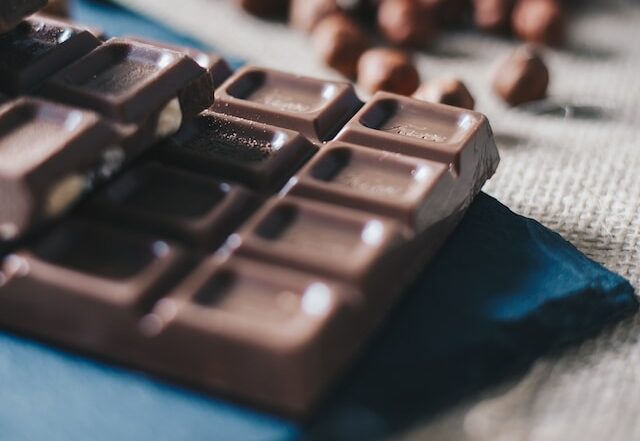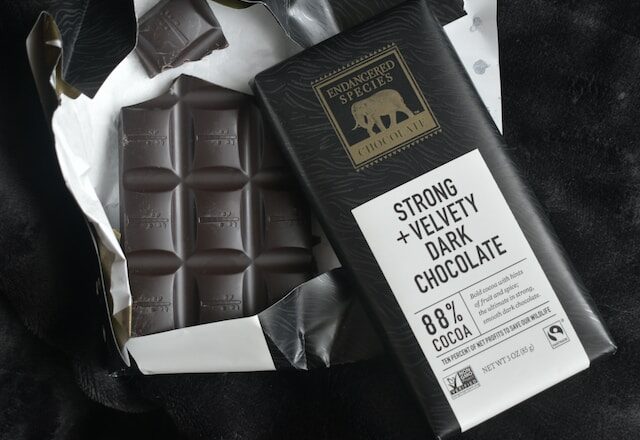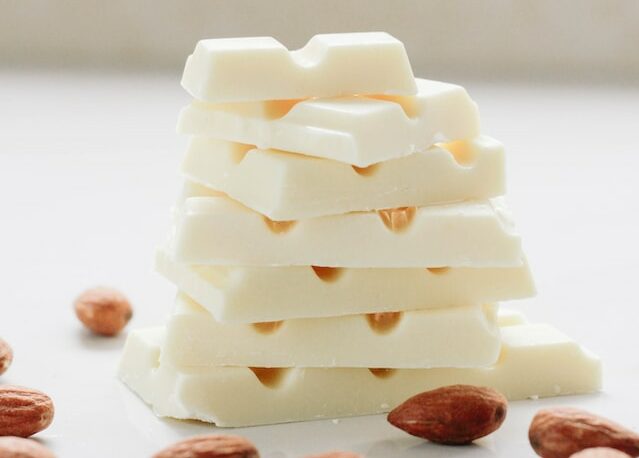Milk chocolate contains a higher percentage of milk and sugar compared to dark chocolate, which has a higher percentage of cocoa solids. Dark chocolate is also typically less sweet and has a more bitter taste than milk chocolate.
What is milk chocolate ?
(Photo by Rūta Celma on Unsplash )

Milk chocolate is a type of chocolate that is made from cocoa solids, milk, sugar, and additional flavorings, such as vanilla. It typically has a creamy and sweet flavor, a lighter color, and a softer texture compared to dark chocolate.
What is dark chocolate?
(Photo by Scarlett Alt on Unsplash )

Dark chocolate is a type of chocolate that contains a higher percentage of cocoa solids and little to no milk, which gives it a more bitter and complex flavor profile. It typically has a dark brown color, a firmer texture, and a lower sugar content compared to milk chocolate. The exact percentage of cocoa solids in dark chocolate can vary, but it is generally higher than 70%.
What is white chocolate?

White chocolate is a type of chocolate that is made from cocoa butter, sugar, and milk solids, but does not contain any cocoa solids. It has a pale ivory color, a creamy and sweet flavor, and a smooth texture. While it is often considered a type of chocolate, some people argue that it should not be classified as such because it does not contain cocoa solids.
The difference in taste
The taste of milk chocolate, dark chocolate, and white chocolate can be quite different due to their varying ingredients and processing methods.
Milk chocolate has a sweet, creamy, and sometimes slightly caramel-like flavor, with a texture that is smooth and velvety on the tongue. The addition of milk gives milk chocolate a milder taste compared to dark chocolate.
Dark chocolate has a more complex flavor profile that can range from slightly bitter to rich and fruity. It has a firmer texture and a more intense cocoa flavor, with little to no sweetness. The lack of milk in dark chocolate also gives it a drier mouthfeel compared to milk chocolate.
White chocolate has a sweet, buttery, and creamy flavor that is often likened to vanilla. It has a very smooth and creamy texture, but lacks the complex flavors of dark chocolate and the sweetness of milk chocolate. White chocolate also has a much lower melting point than milk and dark chocolate, which can affect its texture and flavor.
The difference in appearance
Milk chocolate, dark chocolate, and white chocolate can differ in appearance due to their varying cocoa and milk content.
Milk chocolate has a lighter color compared to dark chocolate, with a creamy and smooth appearance. It may also have a glossy or shiny appearance due to the addition of cocoa butter.
Dark chocolate has a darker brown color due to its higher cocoa content, with a more matte or dull appearance. It may also have a rougher texture or a slightly grainy appearance.
White chocolate has a pale ivory color with a creamy and smooth appearance. It may also have a glossy or shiny appearance due to the addition of cocoa butter. However, it lacks the characteristic brown color of milk and dark chocolate.
The difference in nutrition
Milk chocolate, dark chocolate, and white chocolate differ in their nutritional content, primarily due to differences in their cocoa content and added ingredients.
Milk chocolate contains less cocoa solids and more milk and sugar, making it higher in calories, fat, and sugar. A 100-gram serving of milk chocolate typically contains around 535 calories, 30 grams of fat, and 59 grams of sugar.
Dark chocolate contains a higher percentage of cocoa solids and less milk and sugar, making it lower in calories, fat, and sugar compared to milk chocolate. A 100-gram serving of dark chocolate with 70-85% cocoa typically contains around 600 calories, 43 grams of fat, and 24 grams of sugar.
White chocolate contains no cocoa solids and is made primarily from cocoa butter, sugar, and milk solids. It is higher in calories, fat, and sugar compared to dark chocolate and may not have the same health benefits associated with cocoa. A 100-gram serving of white chocolate typically contains around 560 calories, 34 grams of fat, and 60 grams of sugar.
Overall, while dark chocolate is higher in calories and fat compared to milk chocolate and white chocolate, it may also contain more beneficial nutrients and antioxidants due to its higher cocoa content.
Which is better for you?
While all three types of chocolate can be enjoyed in moderation as part of a balanced diet, dark chocolate is generally considered the healthiest option due to its higher cocoa content and lower sugar content compared to milk chocolate and white chocolate.
Dark chocolate contains flavanols, which are antioxidants that may help lower blood pressure, reduce inflammation, and improve heart health. However, it is important to choose dark chocolate with a high percentage of cocoa (70% or higher) to get the most health benefits.
Milk chocolate and white chocolate, on the other hand, are higher in sugar and lower in cocoa solids, which may not provide the same health benefits as dark chocolate. However, they can still be enjoyed in moderation as a treat.
It’s important to keep in mind that all types of chocolate should be consumed in moderation, as they are high in calories and fat. Eating too much chocolate can lead to weight gain and other health problems.
Does dark chocolate help you sleep?
There is some evidence to suggest that dark chocolate may help improve sleep quality.
Dark chocolate contains small amounts of a compound called tryptophan, which is an amino acid that can increase the production of serotonin, a neurotransmitter that can help promote relaxation and improve mood. Additionally, dark chocolate contains caffeine in smaller amounts compared to coffee or tea, which can also promote alertness during the day and help you sleep better at night if consumed in moderation.
However, it is important to note that the evidence is still limited and more research is needed to fully understand the relationship between dark chocolate and sleep. Also, chocolate contains sugar and fat, which can interfere with sleep if consumed in large amounts or too close to bedtime.
Therefore, while dark chocolate may have some potential benefits for sleep, it’s important to consume it in moderation and not rely on it as a sole solution for sleep problems.
How much sugar is in each chocolate?
The amount of sugar in each chocolate can vary depending on the brand and the specific product, but in general, milk chocolate contains the most sugar, followed by white chocolate and dark chocolate.
Milk chocolate typically contains around 30-40% sugar by weight, which means that a 100-gram serving of milk chocolate may contain around 30-40 grams of sugar.
White chocolate also contains a significant amount of sugar, with around 50-60% sugar by weight. This means that a 100-gram serving of white chocolate may contain around 50-60 grams of sugar.
Dark chocolate, on the other hand, contains less sugar compared to milk chocolate and white chocolate. Depending on the percentage of cocoa in the dark chocolate, it may contain around 10-40% sugar by weight. This means that a 100-gram serving of dark chocolate with 70-85% cocoa may contain around 20-30 grams of sugar.
It’s important to keep in mind that consuming too much sugar can have negative health effects, such as weight gain and increased risk of type 2 diabetes and heart disease. Therefore, it’s best to consume chocolate in moderation and choose dark chocolate with a higher percentage of cocoa and lower sugar content whenever possible.
Featured Image By – solod_sha








